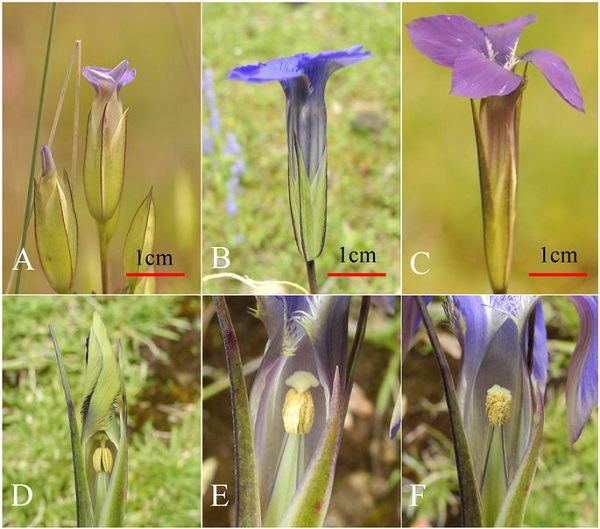There are three categories of autonomous selfing: prior, competing and delayed self-pollination. Gentianopsis is a genus of flowering plants in the gentian family, commonly known as the fringed gentians; they have blue to purple flowers. Delayed selfing has been reported in two species of Gentianopsis (G. barbata and G. paludosa) on the Qinghai-Tibetan Plateau. More studies are needed to understand the evolution of mating systems in this genus.
Researchers from Xishuangbanna Tropical Botanical Garden (XTBG) conducted a study to compare variations in the timing of autonomous selfing of Gentianopsis. They aimed to examine how the selfing timing correlated with floral traits in three Gentianopsis species in which autonomous selfing is achieved through filament elongation.
Their research suggests that the three Gentianopsis species (G. contorta, G. paludosa and G. grandis) have the capacity to self autonomously mainly through filament elongation, but the timing of this differs between the species. Autonomous selfing in later floral life preserves the chance of cross-pollination in early floral life. Autonomous selfing in early floral life offers a selective advantage to plants by reducing their investment in traits that may increase pollinator attraction and visitation.
Flowers are autonomously fertilized in the early floral lifespan in G. contorta and G. paludosa, but in G. grandis autonomous selfing occurs later. The three Gentianopsis species show no significant variation in their capacity for autonomous selfing.
They also found that the timing of autonomous selfing was later than the timing of anther-stigma contact, probably resulting from the low pollen/ovule ratios and the gradual exposure of pollen grains on anthers in the three Gentianopsis species
The study entitled “Correlation between the timing of autonomous selfing and floral traits: a comparative study from three selfing Gentianopsis species (Gentianaceae)” has been published in Scientific Reports.
Contact
ZHU Xingfu Ph.D
Key Laboratory of Tropical Forest Ecology, Xishuangbanna Tropical Botanical Garden, Chinese Academy of Sciences, Mengla, Yunnan 666303, China
E-mail: zhuxingfu@xtbg.org.cn

Flowers of Gentianopsis (A), G. paludosa (B), G. grandis (C) and flower development of G. grandis (D: flower at bud stage, E: flower on the second day, F: flower on the fourth day).
(Images by ZHU Xingfu)

